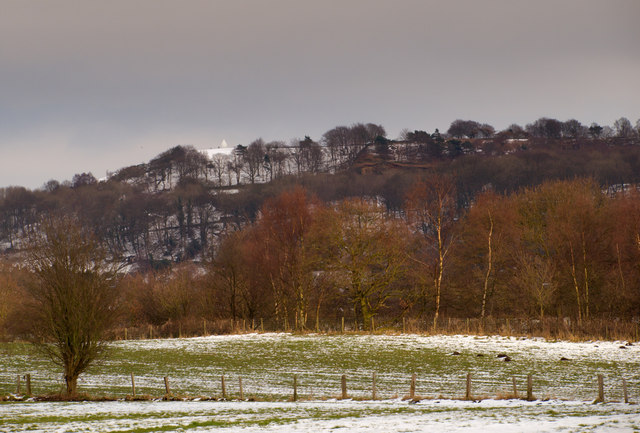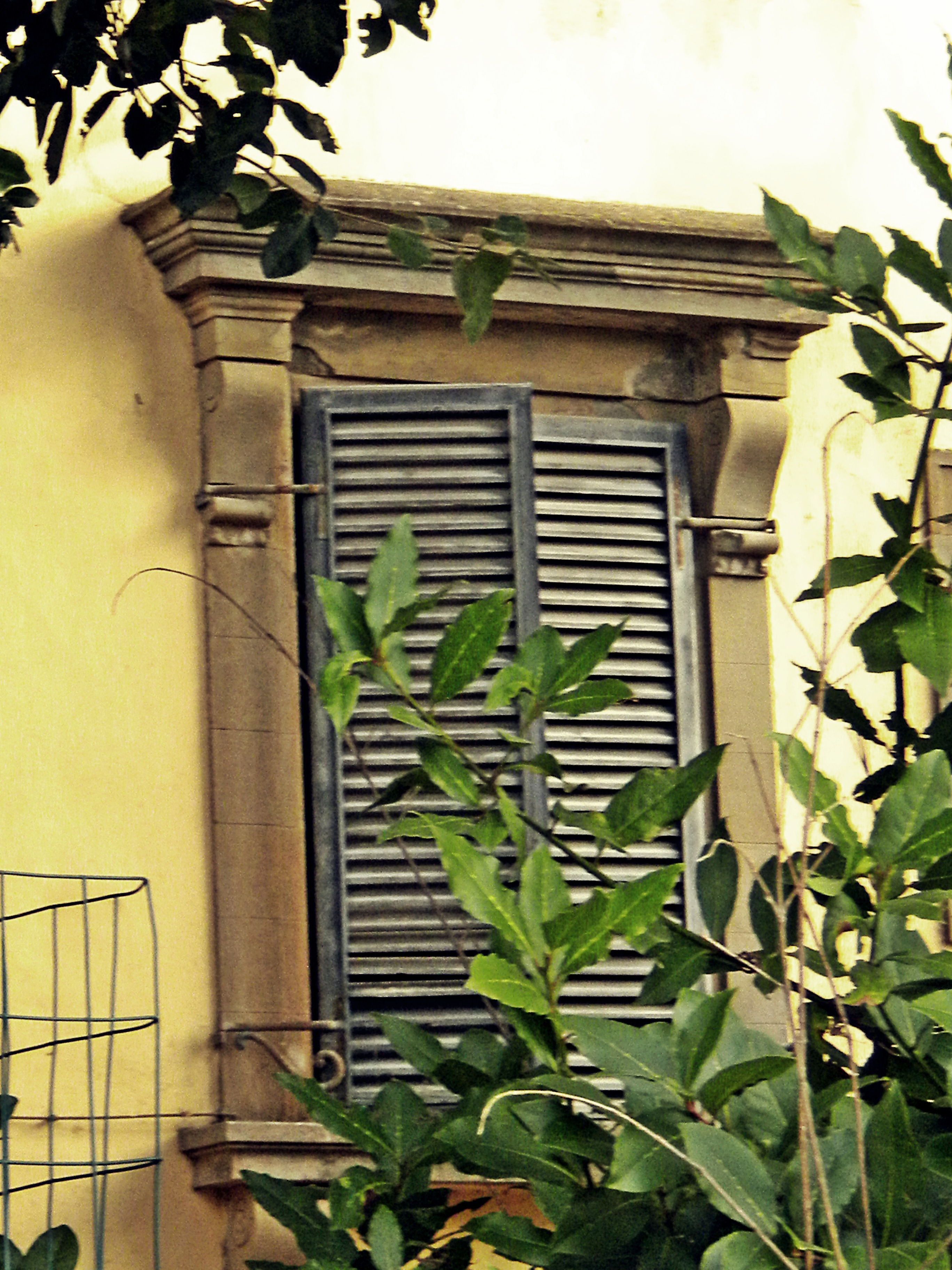|
St Michael's Church, Wincle
St Michael's Church is in the village of Wincle, Cheshire, England. It is an active Anglican parish church in the diocese of Chester, the archdeaconry of Macclesfield and the deanery of Macclesfield. Its benefice is combined with those of St Mary, Bosley, St Michael, North Rode, and St Saviour, Wildboarclough. The church is recorded in the National Heritage List for England as a designated Grade II listed building. History The original church was built in 1647 on the site of a Neolithic burial mound. A tower was added about 1815, and the rest of the church was rebuilt in 1882 by Edward Witts. Architecture The church is built in buff coursed rubble gritstone with a roof of banded grey tiles. The tower is at the west end and the body of the church has five bays. There are no aisles. The tower is in three stages, with a plain west window and bell openings with louvres of Kerridge stone. The top of the tower is battlemented. Over the priest's door ... [...More Info...] [...Related Items...] OR: [Wikipedia] [Google] [Baidu] |
Wincle
Wincle is a village and civil parish in the Cheshire East district of Cheshire, England. It holds parish meetings, rather than parish council meetings. Wincle has a pub, brewery and school. There are several listed buildings and scheduled monuments, including St Michael's Church. Across the River Dane, which is the border between Cheshire and Staffordshire Staffordshire (; postal abbreviation ''Staffs''.) is a Ceremonial counties of England, ceremonial county in the West Midlands (region), West Midlands of England. It borders Cheshire to the north-west, Derbyshire and Leicestershire to the east, ..., sits the neighbouring village of Danebridge. See also * Listed buildings in Wincle * Scheduled monuments in and around Wincle Notes and references External links Villages in Cheshire Towns and villages of the Peak District Civil parishes in Cheshire {{Cheshire-geo-stub ... [...More Info...] [...Related Items...] OR: [Wikipedia] [Google] [Baidu] |
Church Of England
The Church of England (C of E) is the State religion#State churches, established List of Christian denominations, Christian church in England and the Crown Dependencies. It is the mother church of the Anglicanism, Anglican Christian tradition, tradition, with foundational doctrines being contained in the ''Thirty-nine Articles'' and ''The Books of Homilies''. The Church traces its history to the Christian hierarchy recorded as existing in the Roman Britain, Roman province of Britain by the 3rd century and to the 6th-century Gregorian mission to Kingdom of Kent, Kent led by Augustine of Canterbury. Its members are called ''Anglicans''. In 1534, the Church of England renounced the authority of the Papacy under the direction of Henry VIII, beginning the English Reformation. The guiding theologian that shaped Anglican doctrine was the Reformer Thomas Cranmer, who developed the Church of England's liturgical text, the ''Book of Common Prayer''. Papal authority was Second Statute of ... [...More Info...] [...Related Items...] OR: [Wikipedia] [Google] [Baidu] |
South Wales Borderers
The South Wales Borderers was a line infantry regiment of the British Army in existence for 280 years. It came into existence in England in 1689, as Sir Edward Dering's Regiment of Foot, and afterwards had a variety of names and headquarters. In 1782, it became the 24th Regiment of Foot, and had its depot in Warwickshire. Based at Brecon from 1873, the regiment recruited from the border counties of Brecknockshire, Monmouthshire, and Herefordshire. It was not called the South Wales Borderers until the Childers Reforms of 1881. The regiment served in a great many conflicts, including the American War of Independence, various conflicts in India, the Zulu War, Second Boer War, and World War I and World War II. In 1969 the regiment was amalgamated with the Welch Regiment to form the Royal Regiment of Wales. History Early history The regiment was formed by Sir Edward Dering, 3rd Baronet as Sir Edward Dering's Regiment of Foot in 1689, becoming known, like other regiments, by the ... [...More Info...] [...Related Items...] OR: [Wikipedia] [Google] [Baidu] |
Baptismal Font
A baptismal font is an Church architecture, ecclesiastical architectural element, which serves as a receptacle for baptismal water used for baptism, as a part of Christian initiation for both rites of Infant baptism, infant and Believer's baptism, adult baptism. Aspersion and affusion fonts The earliest western fonts are found in the Catacombs of Rome. The fonts of many western Christian denominations that practice infant baptism are designed for baptisms using a non-immersive method, such as aspersion (sprinkling) or affusion (pouring). The simplest of these fonts has a pedestal with a holder for a basin of water. The materials vary greatly, consisting of carved and sculpted stone (including marble), wood, or metal in different shapes. Many fonts are in Octagon, octagonal shape, as a reminder of the new creation and as a connection to the Old Testament practice of circumcision, which traditionally occurs on the eighth day. Some fonts are three-sided as a reminder of the Holy T ... [...More Info...] [...Related Items...] OR: [Wikipedia] [Google] [Baidu] |
Lintel (architecture)
A lintel or lintol is a type of Beam (structure), beam (a horizontal structural element) that spans openings such as Portal (architecture), portals, doors, windows and fireplaces. It can be a decorative architectural element, or a combined ornamented/structural item. In the case of windows, the bottom span is referred to as a window sill, sill, but, unlike a lintel, does not serve to bear a load to ensure the integrity of the wall. Modern-day lintels may be made using prestressed concrete and are also referred to as beams in beam and block, beam-and-block slabs or as ribs in rib-and-block slabs. These prestressed concrete lintels and blocks can serve as components that are packed together and propped to form a wiktionary:Suspended, suspended-floor concrete slab. An arch functions as a curved lintel. Structural uses In worldwide architecture of different eras and many cultures, a lintel has been an element of post and lintel construction. Many different building materials have ... [...More Info...] [...Related Items...] OR: [Wikipedia] [Google] [Baidu] |
Battlement
A battlement, in defensive architecture, such as that of city walls or castles, comprises a parapet (a defensive low wall between chest-height and head-height), in which gaps or indentations, which are often rectangular, occur at intervals to allow for the launch of arrows or other projectiles from within the defences. These gaps are termed embrasures, also called crenels or crenelles, and a wall or building with them is described as ; alternative older terms are and . The act of adding crenels to a previously unbroken parapet is termed crenellation. The function of battlements in war is to protect the defenders by giving them part of the parapet to hide behind, from which they can quickly expose themselves to launch projectiles, then retreat behind the parapet. A defensive building might be designed and built with battlements, or a manor house might be fortified by adding battlements, where no parapet previously existed, or cutting crenellations into its existing parape ... [...More Info...] [...Related Items...] OR: [Wikipedia] [Google] [Baidu] |
Kerridge
Kerridge is a village in the civil parish of Bollington, in the Cheshire East district, in the ceremonial county of Cheshire, England. Kerridge borders the neighbouring parish of Rainow. It gives its name to Kerridge Ridge – one of the western foothills of the Pennines – by which it stands. It is overlooked by the local landmark of White Nancy. The local industries were quarrying and cotton mills, of which remnants remain. On 29 February 1912, the Macclesfield Canal at Kerridge burst its banks, flooding several nearby streets. History Kerridge itself comes from 'key ridge', and was known in Old English as 'Gaeg Hrycg'. Kerridge became a civil parish in 1894, being formed from the rural In general, a rural area or a countryside is a geographic area that is located outside towns and cities. Typical rural areas have a low population density and small settlements. Agricultural areas and areas with forestry are typically desc ... part of Bollington, On 30 ... [...More Info...] [...Related Items...] OR: [Wikipedia] [Google] [Baidu] |
Louver
A louver (American English) or louvre (Commonwealth English; American and British English spelling differences#-re, -er, see spelling differences) is a window blind or window shutter, shutter with horizontal wikt:slat, slats that are angled to admit light and air, but to keep out rain and direct sunshine. The angle of the slats may be adjustable, usually in blinds and windows, or fixed, such as in shutters. History Louvers originated in the Middle Ages as lantern-like constructions in wood that were fitted on top of roof holes in large kitchens to allow ventilation while keeping out rain and snow. They were originally rather crude constructions consisting merely of a barrel. Later, they evolved into more elaborate designs made of pottery, taking the shape of faces where the smoke and steam from cooking would pour out through the eyes and mouth, or into constructions that were more like modern louvers, with slats that could be opened or closed by pulling on a string. C ... [...More Info...] [...Related Items...] OR: [Wikipedia] [Google] [Baidu] |
Aisle
An aisle is a linear space for walking with rows of non-walking spaces on both sides. Aisles with seating on both sides can be seen in airplanes, in buildings such as churches, cathedrals, synagogues, meeting halls, parliaments, courtrooms, theatres, and in long passenger vehicles. An aisle floor may be level or, as in theatres, sloping upward from a stage. Aisles also cross through shops, where they have shelving on either side; warehouses, flanked by storage pallets; and factories, where they separate different work areas. In health clubs, exercise equipment is normally arranged along aisles. They are distinguished from corridors, hallways, walkways, footpaths, pavements (''American English'' sidewalks), trails, paths and open areas of buildings: aisles lie between other open or seating areas, which are all enclosed within a structure. Spaces between buildings are not considered aisles, regardless of their size. The word is related to French ''aile'' (wing). Typic ... [...More Info...] [...Related Items...] OR: [Wikipedia] [Google] [Baidu] |
Bay (architecture)
In architecture, a bay is the space between architectural elements, or a recess or compartment. The term ''bay'' comes from Old French ''baie'', meaning an opening or hole."Bay" ''Online Etymology Dictionary''. http://www.etymonline.com/index.php?allowed_in_frame=0&search=bay&searchmode=none accessed 3/10/2014 __NOTOC__ Examples # The spaces between post (structural), posts, columns, or buttresses in the length of a building, the division in the widths being called aisle, aisles. This meaning also applies to overhead vaults (between rib vault, ribs), in a building using a vaulted structural system. For example, the Gothic architecture period's Chartres Cathedral has a nave (main interior space) that is '' "seven bays long." '' Similarly in timber framing a bay is the space between posts in the transverse direction of the building and aisles run longitudinally."Bay", n.3. def. 1-6 and "Bay", n.5 def 2. ''Oxford English Dictionary'' Second Edition on CD-ROM (v. 4.0) © Oxford Un ... [...More Info...] [...Related Items...] OR: [Wikipedia] [Google] [Baidu] |
Yale University Press
Yale University Press is the university press of Yale University. It was founded in 1908 by George Parmly Day and Clarence Day, grandsons of Benjamin Day, and became a department of Yale University in 1961, but it remains financially and operationally autonomous. , Yale University Press publishes approximately 300 new hardcover A hardcover, hard cover, or hardback (also known as hardbound, and sometimes as casebound (At p. 247.)) book is one bookbinding, bound with rigid protective covers (typically of binder's board or heavy paperboard covered with buckram or other clo ... and 150 new paperback books annually and has a backlist of about 5,000 books in print. Its books have won five National Book Awards, two National Book Critics Circle Awards and eight Pulitzer Prizes. The press maintains offices in New Haven, Connecticut and London, England. Yale is the only American university press with a full-scale publishing operation in Europe. It was a co-founder of the dist ... [...More Info...] [...Related Items...] OR: [Wikipedia] [Google] [Baidu] |
Tumulus
A tumulus (: tumuli) is a mound of Soil, earth and Rock (geology), stones raised over a grave or graves. Tumuli are also known as barrows, burial mounds, mounds, howes, or in Siberia and Central Asia as ''kurgans'', and may be found throughout much of the world. A cairn, which is a mound of stones built for various purposes, may also originally have been a tumulus. Tumuli are often categorised according to their external apparent shape. In this respect, a long barrow is a long tumulus, usually constructed on top of several burials, such as passage graves. A round barrow is a round tumulus, also commonly constructed on top of burials. The internal structure and architecture of both long and round barrows have a broad range; the categorization only refers to the external apparent shape. The method of may involve a dolmen, a cist, a mortuary enclosure, a mortuary house, or a chamber tomb. Examples of barrows include Duggleby Howe and Maeshowe. Etymology The word ''tumulus'' ... [...More Info...] [...Related Items...] OR: [Wikipedia] [Google] [Baidu] |






